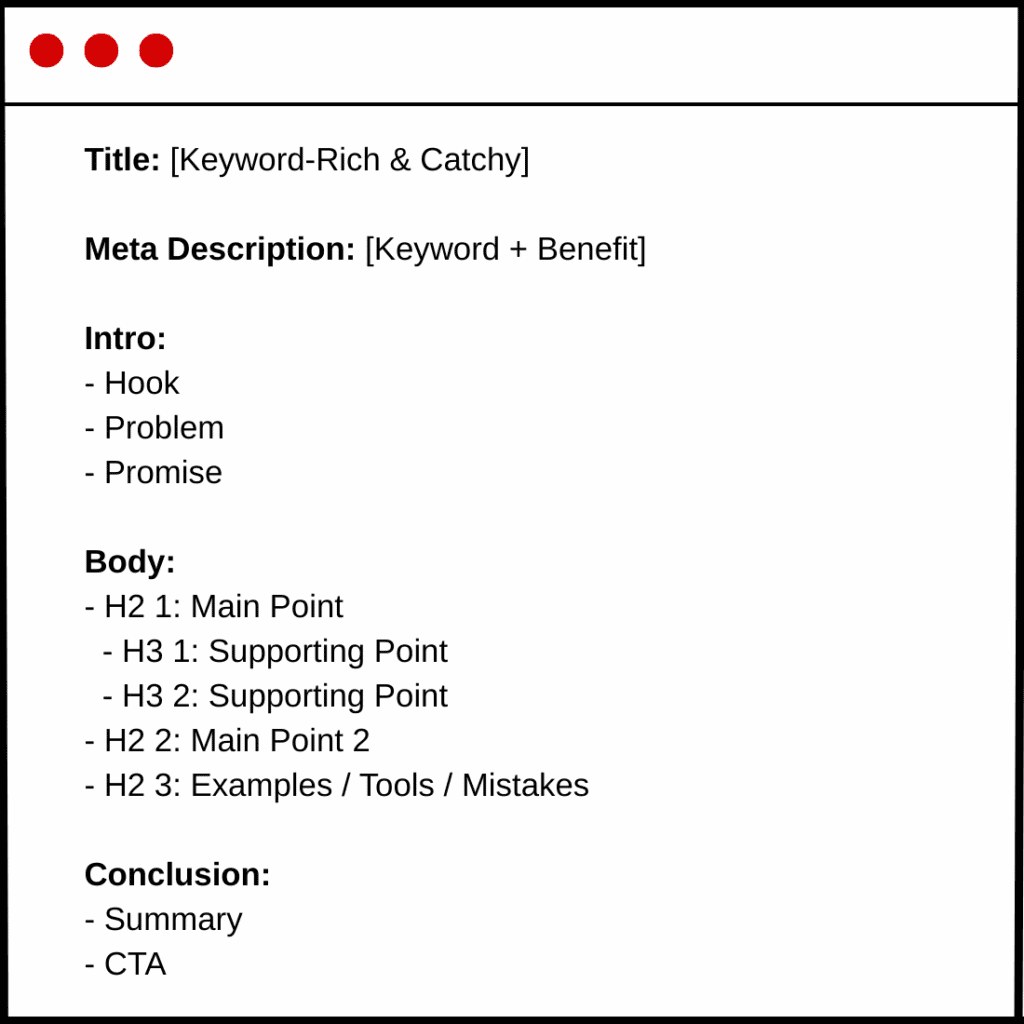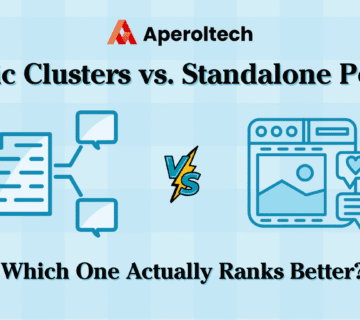If your blog isn’t following the right SEO blog post structure, you’re missing out on traffic, engagement, and rankings.
The good news? Writing SEO blog posts that rank and convert isn’t about gaming the algorithm. It’s about understanding structure and making your content irresistible to readers and search engines.
In this guide, we’ll break down the ideal SEO blog post structure in 2025, with real-world tips, tools, and best practices.
Why Blog Post Structure Still Matters in 2025
- Google’s Helpful Content update rewards clearly structured, reader-first content
- Structured posts reduce bounce rates and increase dwell time
- Internal linking and keyword placement work better when your format is intentional
- Readers scan, not read — structure improves skimmability
A well-structured blog post can double your average session duration and significantly boost your ranking for long-tail queries.
The 9-Part Structure of a Perfect SEO Blog Post
1. Start with a Click-Worthy Title
- Use your focus keyword close to the beginning
- Keep it under 60 characters
- Use numbers, powerful words, or questions when possible
- Example: The Ultimate Guide to Mobile App UX in 2025
2. Write a Compelling Meta Description
- Under 160 characters
- Include the focus keyword
- Hint at the value or result the reader will get
- Example: Learn how to optimize app UX for higher retention and smoother onboarding.
3. Craft an Engaging Introduction
- Hook readers with a pain point or statistic
- Introduce the solution or benefit
- Mention the keyword early
- Example: “Most blogs never rank on Google—because they’re not structured for search. In this guide, we’ll show you how to write blog posts that actually perform.”
4. Use H2 and H3 Headers for Structure
- Organize your content into logical sections
- Use the main keyword in at least one H2
- Break complex ideas into H3 sub-points
5. Incorporate Your Focus Keyword Strategically
- 1x in the title
- 1x in the intro (within the first 100 words)
- 2–3x in the body (naturally)
- 1x in a subheading (if it fits)
Avoid keyword stuffing—write for humans first.
6. Add Internal & External Links
- Internal: Link to your own related posts (topic clusters!)
- External: Link to authoritative sources like Google Search Central, HubSpot, Moz, etc.
This improves crawlability and builds topical relevance.
7. Use Visuals, Lists, and Quotes
- Add bullet lists, screenshots, diagrams, or short callouts
- Use visual hierarchy to guide the reader
- Include ALT text with keywords for every image
8. Add a Strong, Action-Oriented Conclusion
- Summarize key takeaways
- Reinforce the benefit
- Lead to a call-to-action
TL;DR: Blog structure isn’t just about SEO—it’s about guiding your audience to value.
9. Include a Clear CTA
- Invite readers to act (book a call, download a guide, read the next post)
- Place CTAs at the end or in-line within the article
Example CTA:
Ready to improve your content structure?
Book a free SEO consultation
Bonus: SEO Blog Post Template
Here’s a simple layout you can reuse for every article:

Common Mistakes to Avoid
- Keyword stuffing without context
- Skipping internal links
- Publishing walls of text without breaks
- Writing intros that are too long or off-topic
- No clear CTA
A well-structured article not only helps Google understand your intent but also improves the user’s experience. Your SEO blog post structure should guide the reader from headline to CTA, while answering key questions and offering value at every scroll. Tools like Surfer SEO, Clearscope, or HubSpot’s SEO planner can help visualize structure and optimize content relevance.
Conclusion: Structure = Strategy
You can publish amazing insights, but without a clear SEO blog post structure, your content may never get discovered or convert.
By following this SEO blog post structure, you’re creating content that’s not only crawlable and keyword-optimized but also human-friendly. That’s exactly what Google (and your readers) want in 2025.
Whether you’re writing technical explainers, startup advice, or SaaS case studies, this structure is your best foundation for organic success.
Want Done-for-You SEO Blog Strategy?
At AperolTech, we help startups and tech companies build SEO blog strategies that actually rank — from topic research and keyword planning to writing optimized content and building topic clusters that Google loves.
- Custom content calendars
- On-page SEO optimization
- High-converting, structured blog posts
- Full strategy aligned with your growth goals
Let’s structure your SEO for success — book a free consultation
Or explore our SEO Services to see how we help brands grow with content.




No comment